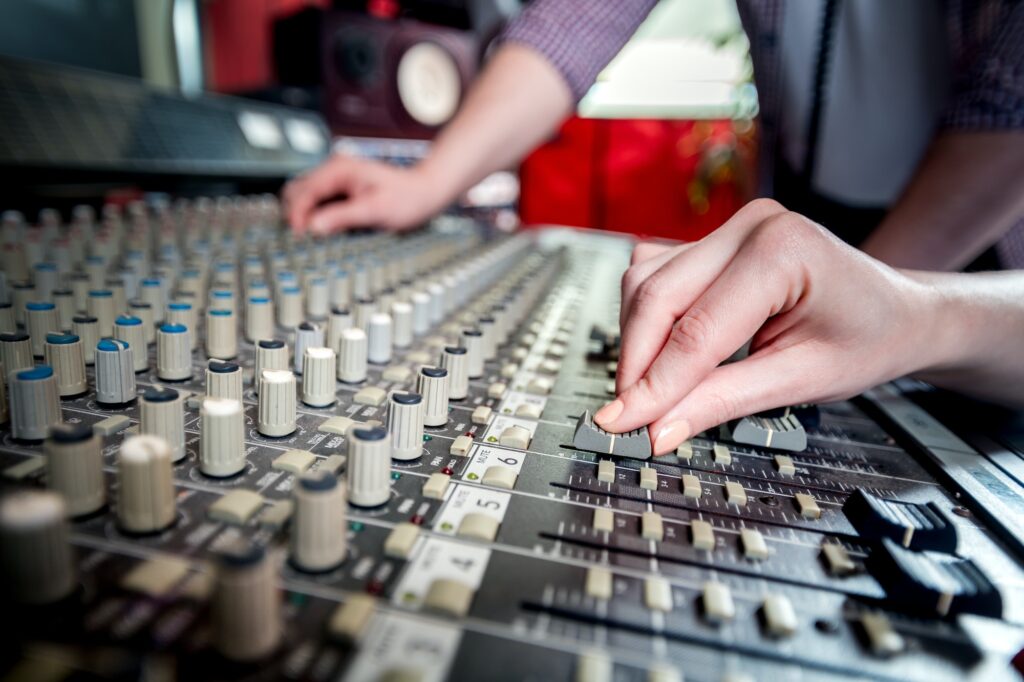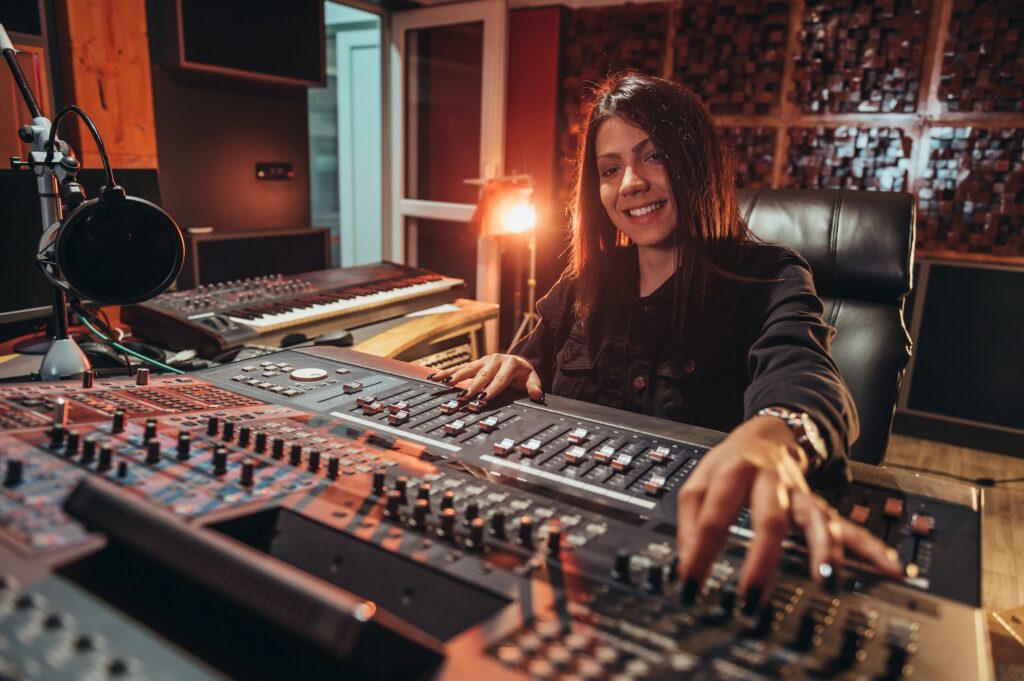
Are you tired of subpar sound quality when listening to music or watching videos? Look no further than a soundboard to enhance your audio experience. But with so many options out there, it can be overwhelming to choose the right one. We’ve narrowed down the top five must-have features for a top-quality audio experience. These features will take your audio to the next level, from customizable equalizers to advanced noise reduction technology. Whether you’re a music lover, gamer, or film enthusiast, these soundboard features are essential for optimal sound performance. So sit back, relax, and get ready to experience audio like never before.
Must-Have Features for Top-Quality Audio Experience
Multi-Channel Mixing Capabilities
One of the most important features of a soundboard is its multi-channel mixing capabilities. This feature allows you to mix multiple audio signals and control their levels independently. It is essential for achieving a balanced and dynamic sound.
Whether mixing music, sound effects, or dialogue, a soundboard with multi-channel mixing capabilities will give you greater control over the sound mix. It will allow you to adjust the levels of each channel to achieve the desired balance and ensure that all audio elements are audible and clear.

Built-in Effects and EQs
Another important soundboard feature is its built-in effects and EQs (equalizers). These features allow you to add effects to the audio signals and adjust their frequencies. They are essential for shaping the sound and achieving the desired tone.
You can add reverb, delay, distortion, and other effects to the audio signals with built-in effects. This can enhance the sound quality and add depth and texture to the audio. On the other hand, EQs allow you to adjust the levels of different frequencies in the audio signal. This can help you eliminate unwanted frequencies, boost desired frequencies, and achieve a balanced and dynamic sound.
You can visit the TunePocket for a comprehensive collection of online soundboards
Looping and Sampling Functions
Looping and sampling functions are also important features of a soundboard. These features allow you to repeat audio signals and create new ones by recording and manipulating existing ones. They are essential for creating unique and dynamic sounds.
With looping functions, you can repeat a section of audio continuously, creating a loop that can be used as a background or rhythmic element. On the other hand, sampling functions allow you to record audio samples and manipulate them to create new sounds. This can be useful for creating unique sound effects or adding a personal touch to your audio.
Customizable User Interface
A customizable user interface is also an essential feature of a soundboard. It allows you to customize the layout and functionality of the soundboard to suit your needs and preferences. This can help you work more efficiently and achieve better results.
With a customizable user interface, you can arrange the controls and settings of the soundboard in a way that makes sense. You can also assign shortcuts and macros to the controls to speed up your workflow and make it more intuitive.
Compatibility with Various Devices and Software
Finally, compatibility with various devices and software is an important soundboard feature. It allows you to use the soundboard with different audio sources and integrate it with other software and hardware. This can make your audio setup more versatile and flexible.
With compatibility features, you can connect your soundboard to different devices and use it with different software applications. You can also integrate it with other hardware devices, such as microphones and instruments, to expand its functionality and capabilities.
The Ultimate Guide to Soundboard: What They Are and How to Use Them
Examples of Soundboards with These Features
Now that we have discussed the must-have features of a soundboard for a top-quality audio experience let’s look at some examples of soundboards with these features.
One soundboard that has all of these features is the Behringer X32. This digital mixer has 32 channels of audio mixing, built-in effects, EQs, looping and sampling functions, a customizable user interface, and compatibility with various devices and software.
Another soundboard that has these features is the Sound craft Si Expression. This digital mixer has 24 channels of audio mixing, built-in effects, EQs, looping and sampling functions, a customizable user interface, and compatibility with various devices and software.
These soundboards are excellent choices for achieving top-quality sound in any audio experience. They are designed to provide maximum control and flexibility and are widely used in professional audio settings.

How to Choose the Right Soundboard for Your Needs
Choosing the right soundboard for your needs can be daunting, but it doesn’t have to be. Here are some tips to help you choose the right soundboard for your needs:
1. Determine your budget: Soundboards can range in price from a few hundred dollars to tens of thousands. Determine how much you are willing to spend before you start researching.
2. Consider your needs: Consider the type of audio you will be working with and the size of your setup. This will help you determine the number of channels and the features you need.
3. Read reviews of different soundboards to understand their performance and reliability. Look for reviews from people who have similar needs and setups as you.
4. Try before you buy: If possible, try out different soundboards before purchasing. This will give you a better idea of how they perform and how easy they are to use.
5. Choose a reputable brand: Choose a soundboard from a reputable brand with a good record of producing high-quality products. This will ensure that you get a soundboard that is reliable and durable.
How to Choose the Right Audio Mixer for Your Needs
Tips for Optimizing Your Soundboard Setup
Once you have chosen the right soundboard for your needs, it’s time to optimize your setup for the best possible sound. Here are some tips to help you optimize your soundboard setup:
1. Set levels correctly: Ensure all levels are set correctly to avoid distortion or clipping.
2. Use EQs effectively: Use EQs to eliminate unwanted frequencies and boost desired frequencies to achieve a balanced and dynamic sound.
3. Use effects sparingly: Use effects sparingly to avoid overprocessing the audio and muddying the sound.
4. Monitor your audio: Use headphones or speakers to monitor it and ensure it sounds good.
5. Practice, practice, practice: Practice using your soundboard to become familiar with its features and capabilities. This will help you work more efficiently and achieve better results.
Common Mistakes to Avoid When Using a Soundboard
When using a soundboard, there are some common mistakes that you should avoid. These mistakes can lead to poor sound quality and a frustrating experience. Here are some common mistakes to avoid:
1. Overusing effects: Too many can lead to a muddy and overprocessed sound. Use effects sparingly to achieve a natural and balanced sound.
2. Improper gain staging: Improper gain staging can lead to distortion and clipping. Ensure that all levels are set correctly to avoid this.
3. Poor mic placement: Placing your microphone poorly can lead to unwanted noise and poor sound quality. Ensure that your microphone is placed correctly and is of good quality.
4. Ignoring room acoustics: Ignoring room acoustics can lead to a poor listening experience. Consider the acoustics of your room and make necessary adjustments to improve the sound quality.
5. Skipping soundcheck: Skipping soundcheck can lead to poor sound quality during the performance. Always do a sound check before the performance to ensure that everything sounds good.
In conclusion, a soundboard is essential for achieving top-quality sound in any audio experience. The must-have features of a soundboard for a top-quality audio experience include:
- Multi-channel mixing capabilities.
- Built-in effects and EQs.
- Looping and sampling functions.
- A customizable user interface.
- Compatibility with various devices and software.
When choosing a soundboard, consider your budget, needs, and the brand’s reputation. When optimizing your soundboard setup, ensure that levels are set correctly, use EQs and effects effectively, monitor your audio, and practice using your soundboard.
By avoiding common mistakes such as overusing effects, improper gain staging, poor mic placement, ignoring room acoustics, and skipping soundchecks, you can achieve a top-quality audio experience that is both immersive and enjoyable.
